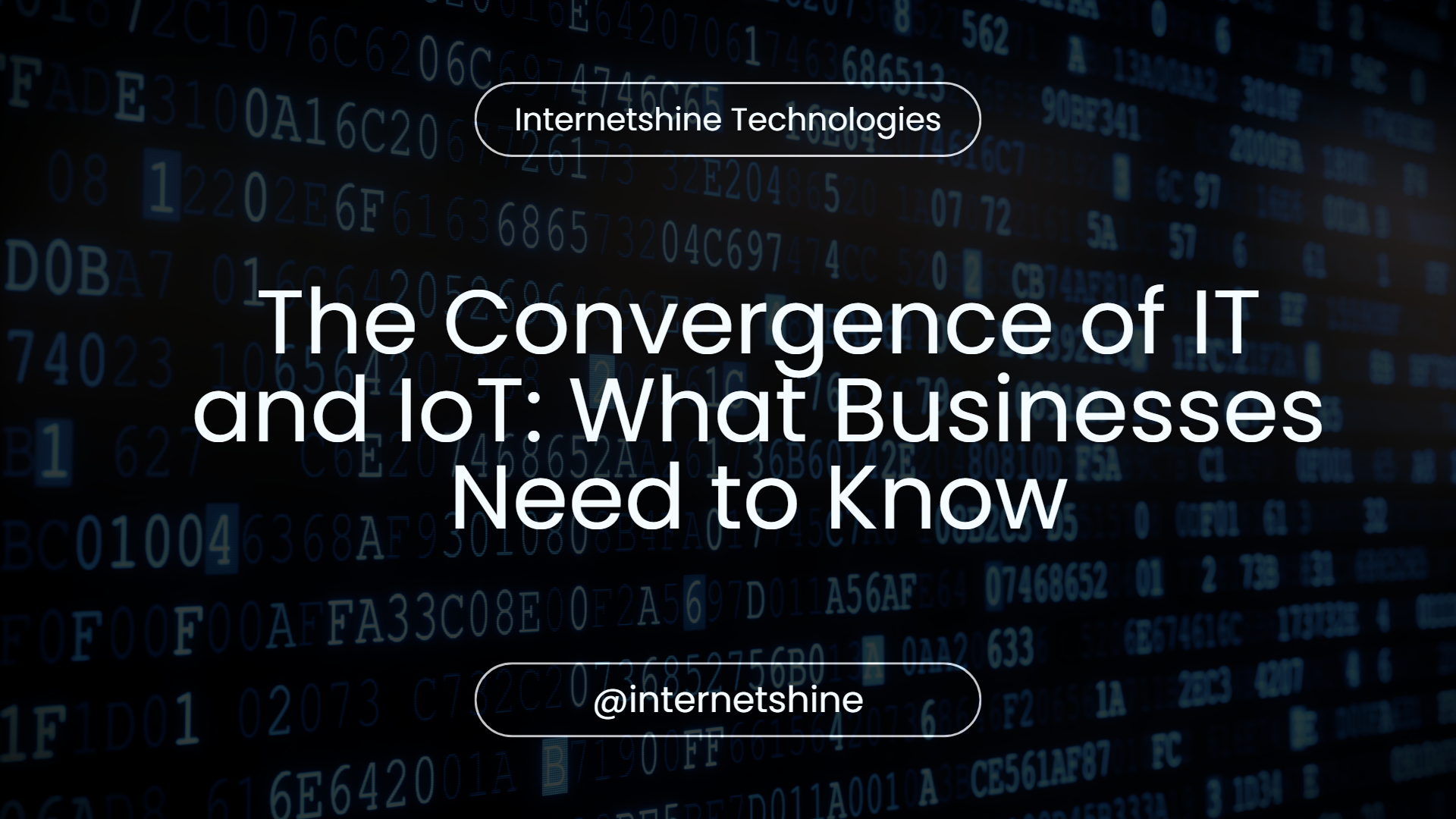The Convergence of IT and IoT: What Businesses Need to Know
In today’s digital age, technology continues to evolve at a breakneck pace, and two of the most impactful trends driving this evolution are Information Technology (IT) and the Internet of Things (IoT). Individually, both IT and IoT have transformed how businesses operate, but their convergence is unlocking unprecedented opportunities and challenges. For companies looking to stay ahead of the curve, understanding this convergence is crucial.
What Is the Convergence of IT and IoT?
IT, traditionally focused on the processing, storage, and transmission of data, is the backbone of modern business operations. IoT, on the other hand, involves connecting physical devices to the internet, enabling them to collect and exchange data. The convergence of IT and IoT refers to the integration of these two domains, where the vast data generated by IoT devices is seamlessly processed, analyzed, and managed by IT systems.
The Impact on Businesses
1. Enhanced Data-Driven Decision Making
IoT devices generate vast amounts of data from various sources such as sensors, machines, and consumer products. When integrated with IT systems, businesses can harness this data for real-time insights, predictive analytics, and improved decision-making. For example, in manufacturing, IoT sensors can monitor equipment performance, and IT systems can analyze this data to predict maintenance needs, thereby reducing downtime and costs.
2. Improved Operational Efficiency
The convergence of IT and IoT can streamline operations across industries. In logistics, for instance, IoT-enabled tracking systems provide real-time updates on shipment locations, while IT platforms analyze this data to optimize delivery routes, reduce fuel consumption, and improve overall efficiency. This level of integration allows businesses to operate more efficiently and respond swiftly to any disruptions.
3. New Business Models and Revenue Streams
The fusion of IT and IoT opens the door to innovative business models. Companies can offer IoT-enabled products with IT-backed services, such as predictive maintenance, remote monitoring, and data-driven insights. These new offerings not only provide value to customers but also create recurring revenue streams for businesses. For example, a manufacturer can sell equipment with an IoT monitoring system that alerts customers of potential issues, offering repair services as a subscription.
4. Enhanced Customer Experience
By leveraging the data from IoT devices and integrating it with IT systems, businesses can deliver personalized and seamless customer experiences. Retailers, for instance, can use IoT data to track in-store customer behavior and IT analytics to tailor promotions and product placements. This convergence enables businesses to understand and anticipate customer needs better, leading to higher satisfaction and loyalty.
5. Security and Compliance Challenges
The convergence of IT and IoT also brings challenges, particularly in security and compliance. IoT devices often have limited security features, making them vulnerable to cyberattacks. As these devices become integrated with IT systems, the attack surface expands, increasing the risk of data breaches. Businesses must invest in robust cybersecurity measures and ensure compliance with relevant regulations to protect sensitive data and maintain customer trust.
Steps for Businesses to Embrace IT-IoT Convergence
- Assess Your Current Infrastructure: Evaluate your existing IT and IoT infrastructure to identify integration opportunities. Determine the data sources, connectivity needs, and compatibility of devices and systems.
- Invest in Scalable Solutions: Choose scalable IT and IoT platforms that can grow with your business. Scalable solutions allow for the seamless addition of new devices, data sources, and analytical capabilities as your needs evolve.
- Prioritize Security: Implement comprehensive cybersecurity measures, including encryption, authentication, and network segmentation. Regularly update software and firmware to address vulnerabilities and comply with industry regulations.
- Develop Data Management Strategies: Establish a clear data management strategy to handle the influx of IoT-generated data. Focus on data storage, processing, and analysis to derive actionable insights that drive business value.
- Foster Collaboration Across Teams: Encourage collaboration between IT and operational teams to ensure a smooth integration of IoT devices with IT systems. Cross-functional teams can help identify potential challenges and develop solutions that align with business goals.
Conclusion
The convergence of IT and IoT is not just a technological trend; it’s a business imperative. By embracing this convergence, companies can unlock new opportunities, drive innovation, and gain a competitive edge in their industries. However, businesses must also be mindful of the challenges, particularly in security and data management, to fully realize the benefits. As IT and IoT continue to evolve, staying informed and agile will be key to navigating this dynamic landscape.

